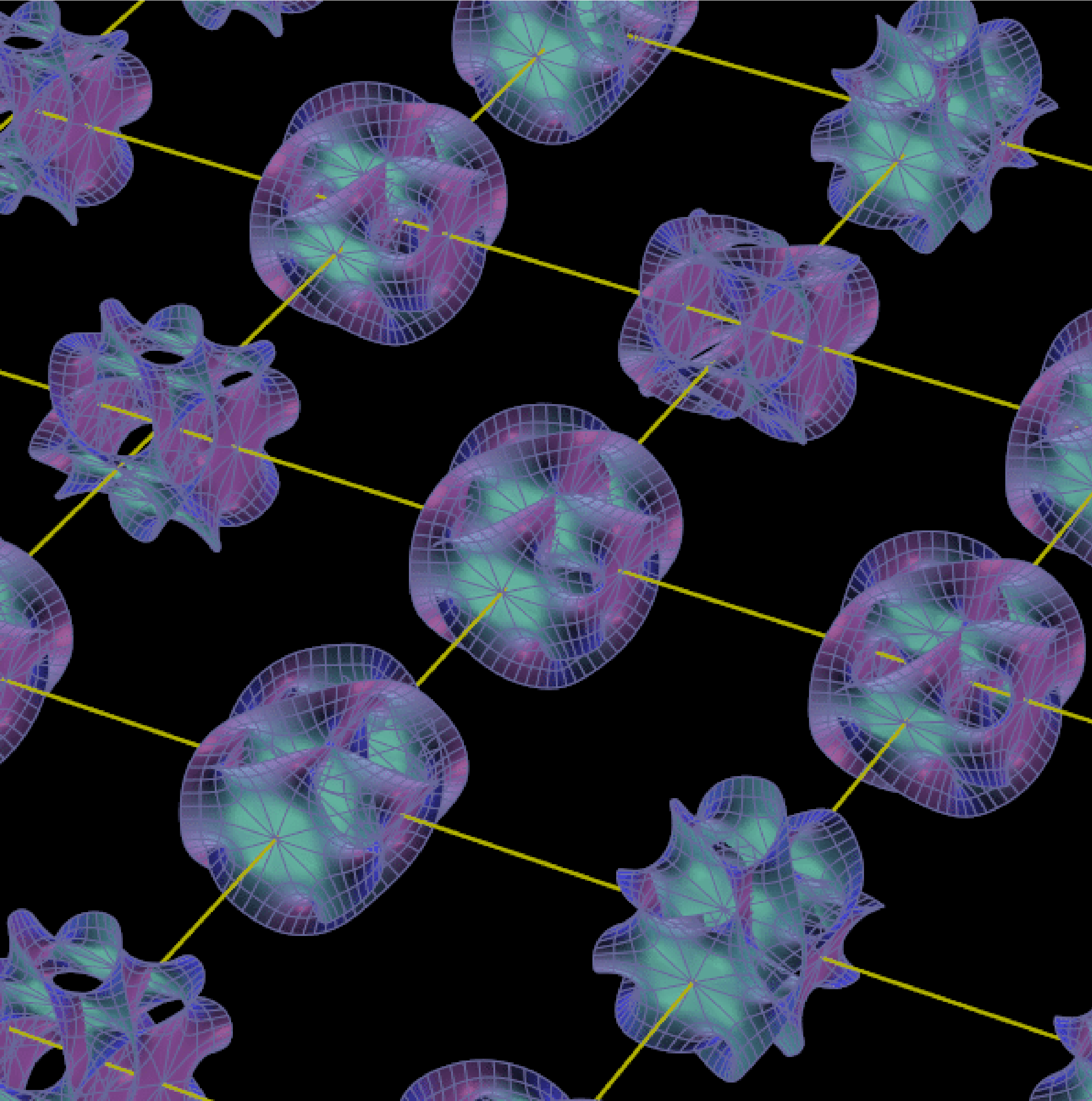Gravitation, Cosmology, Quantum Fields and Strings
The very big and the very small are intimately connected and ultimately ruled by the same laws of physics, indicating a profound unity underlying the cosmos. Quantum Field Theory is the framework that unifies Quantum Mechanics and Special Relativity, and it describes elementary particles and all their known interactions, except for the gravitational one. General Relativity — Einstein’s theory of gravity — predicts many fascinating phenomena, such as black holes and gravitational waves, whose existence has spectacularly been confirmed. It also provides the basis for understanding the Universe and its evolution at the largest scales. Unifying these two frameworks into a single description requires a Quantum Theory of Gravity. String Theory and the closely related Holographic Dualities have proven to be the most successful approaches towards this goal.
Our progress in understanding the cosmos has provided a detailed and accurate picture of the Universe, yet it also presents profound new challenges. Questions such as the nature of the dark energy driving the accelerated expansion of the Universe, the enigmatic dark matter shaping cosmic structures, and the possible need for new physics beyond the Standard Model of particle physics or Einstein’s theory, remain open. The emerging field of gravitational wave astronomy may help resolve these issues, particularly in understanding the extreme distortions of space and time during black hole collisions and the resulting gravitational waves.
The study of String Theory led to the discovery of the gauge/string duality in 1997, which posits that a String Theory in an anti-de Sitter spacetime of d+1 dimensions is equivalent to a gauge Quantum Field Theory in a flat d-dimensional spacetime, effectively embodying the holographic principle. This has given us, for the first time, a paradigm for complete formulations of consistent Quantum theories of Gravity where the bewildering properties of black holes discovered by Hawking can be sharpened and possibly resolved. On the other hand, the duality also allows for a powerful reformulation of complex quantum systems through the dual physics of higher-dimensional spacetimes.
OUR CONTRIBUTION
Our work on Gravitational Physics covers a wide range of classical and quantum aspects of gravity and black holes. Many of the questions we address revolve around the fundamental nature of horizons and singularities in spacetime: What is a quantum black hole? How does spacetime emerge out of the quantum entanglement of more fundamental degrees of freedom? How should we interpret the appearance of singularities in Einstein’s theory, and what do they reveal about quantum gravity? Holography is often the framework where we investigate these questions most effectively.
In Cosmology, we explore the implications of inflationary models, cosmology of the early and present universe, axions, semiclassical gravity, as well as the formation and cosmological implications of primordial black holes. We are also involved in the study of possible Stochastic Gravitational Wave Backgrouns of cosmological origin, which may be probed by existing and future detectors.
Our research encompasses many aspects of Quantum Field Theory, from the most phenomenological, as described in Particle Physics Phenomenology, to the most formal. The latter include the study of conformal or supersymmetric theories in different numbers of dimensions, both in their own right and in connection with the Gauge/String Duality. In parallel with this, the crucial role of entanglement in the foundations of quantum field theory and in holography has come to the fore in recent years, and we are contributing to unraveling its structural properties and consequences.
In String Theory our activities span a wide array of topics such as the dynamics of branes, the study of the fundamental symmetries of String Theory, the determination of 1/N corrections in the gauge/string duality (with N the rank of the gauge group), and the identification of non-relativistic limits of the duality. As a quantum theory of gravity, String Theory also has profound implications for the microphysics of black holes, directly linking to our research in gravity.
One fundamental aspect of the Gauge/String Duality is that it maps the strong coupling, large-N regime of the gauge theory to the regime on the string side in which the theory reduces to classical gravity. Exploiting this connection, we use classical gravity to study regimes of Quantum Chromodynamics inaccessible by conventional techniques. These include the far-from-equilibrium dynamics of the Quark-Gluon Plasma created in heavy ion collisions or the properties of dense quark matter that could be present at the core of neutron stars. More recently, we have spearheaded cosmological applications of holography such as the possible generation of primordial Gravitational Waves in phase transitions in the early Universe.
Holography is thus a prime example of synergy at work at the ICCUB: By connecting fields as diverse as Quantum Field Theory, String Theory, Gravitation, Cosmology, Gravitational Waves, Particle Physics and Nuclear Physics, it weaves together the varied textures of our research.

LINES OF RESEARCH
- Conformal and Supersymmetric Field Theories
- Entanglement in Quantum Field Theory
- Brane Dynamics
- Symmetries of String Theory and Quantum Fields
- Holography
- Dark matter and dark energy in cosmology and in particle physics
- Quantum and semiclassical gravity
- Black holes: classical, quantum, stringy, astrophysical, and primordial
- Inflation and the early universe
- Gravitational Waves